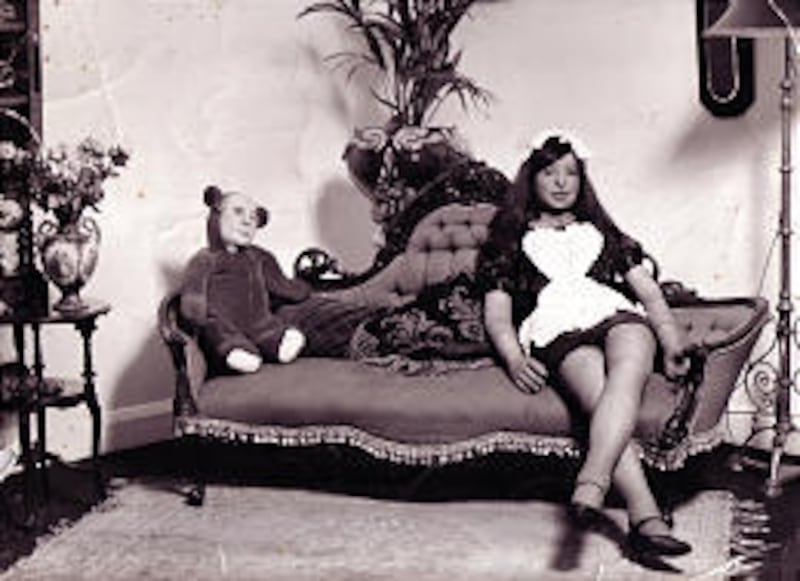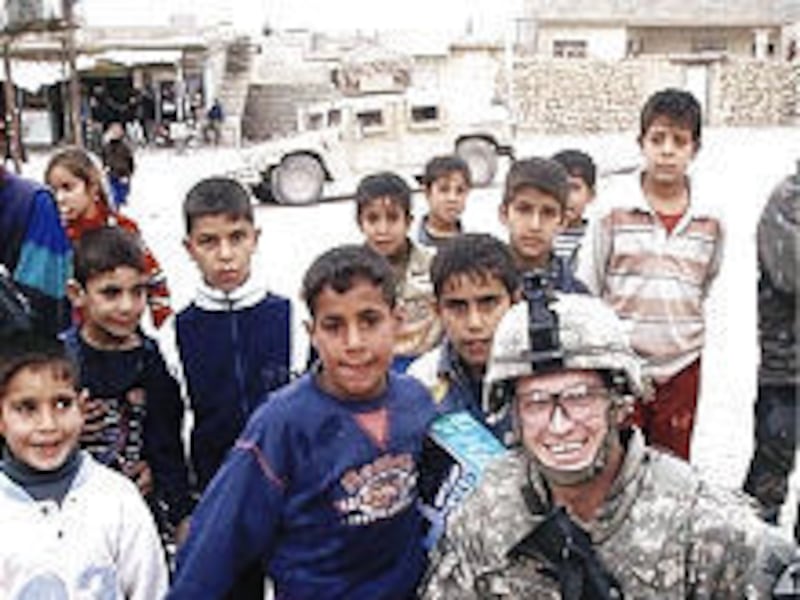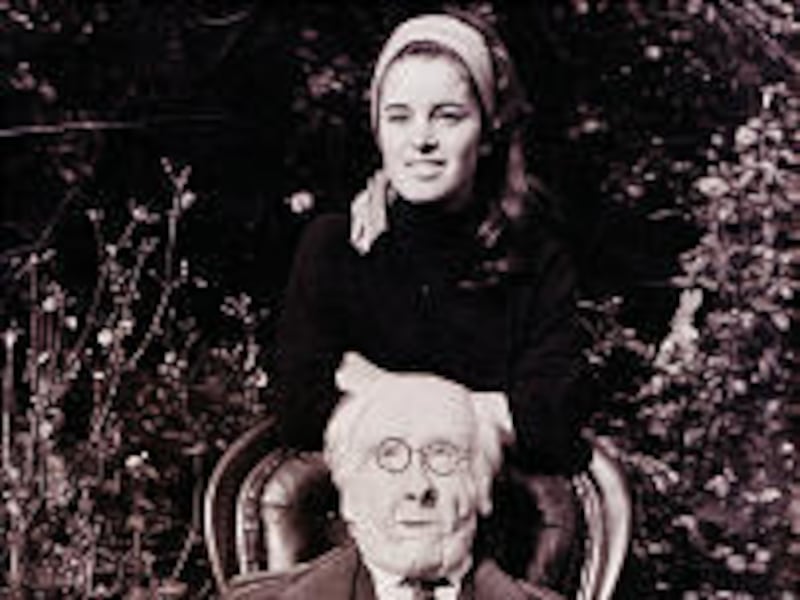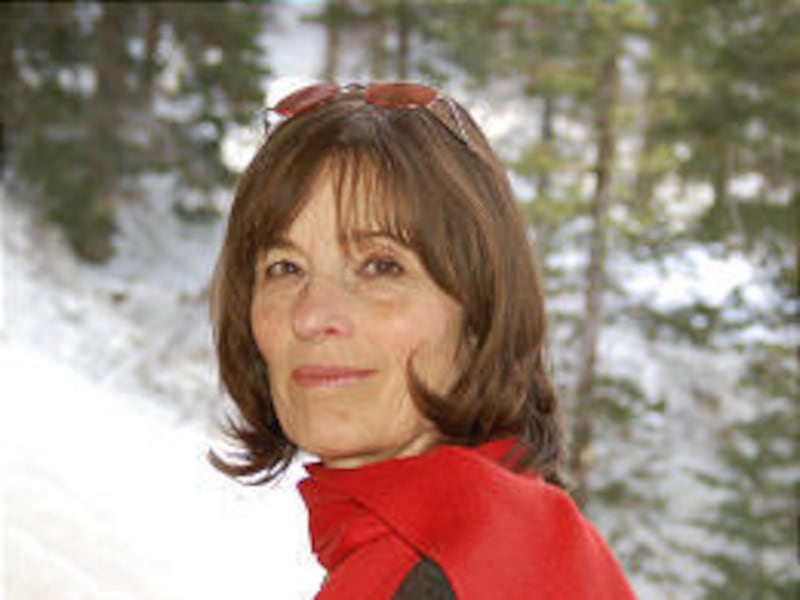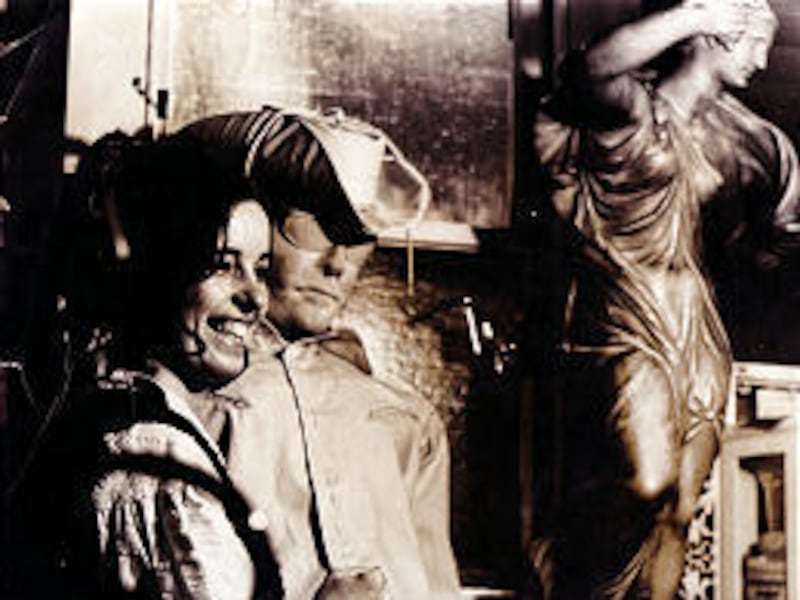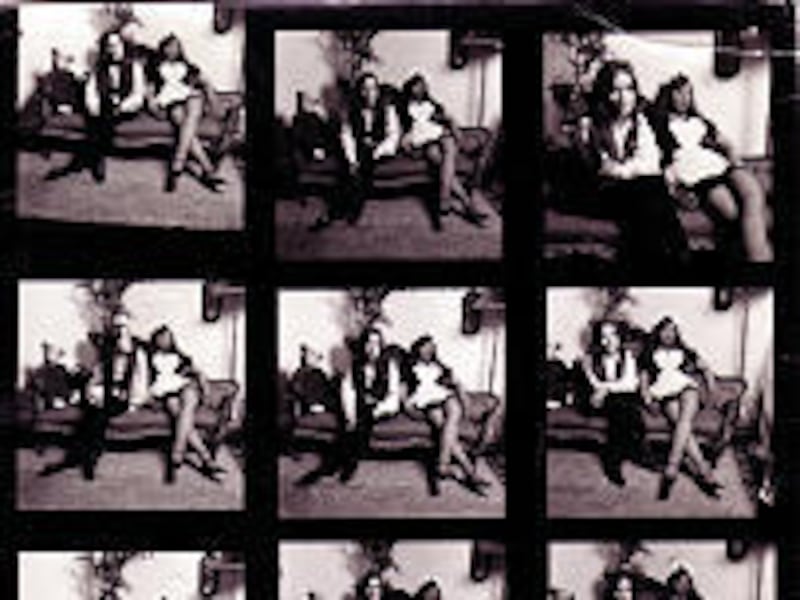"She's not a girl who misses much. Do do do do do do — oh yeah!" — John Lennon, "Happiness is a Warm Gun" (from "The White Album")
In machine gun-like fashion, artist Jann Haworth delivers a volley of support, dissension, enthusiasm, disdain, endorsement and opposition ... depending on the subject you raise.
She is quick-witted, opinionated and disarmingly polite — a true feminist who calls and visits her children with strict regularity.
Now in her 60s, her face retains the adolescent comeliness that once captivated young British artists in the 1960s.
From the early "Pop" days of her visual-art career, where she helped then-husband Peter Blake design and construct the set for the Beatles' "Sgt. Pepper's Lonely Hearts Club Band" album cover, to this year's exhibit of Pop abstract assemblages in the Salt Lake Art Center, Haworth has been a major voice for the democratization of art.
· · · · ·
Born in 1942 in Hollywood, Calif., Haworth spent much of her childhood running around movie-studio backlots, where her father, Academy Award-winner Teddy Haworth, designed sets.
At age 8, her artist-mother taught Haworth to sew. "It's really no exaggeration to say that I really began making my own clothes from that time," she said.
Later, her ability to sew and interpret dress patterns, combined with her experiences on Hollywood backlots, became the catalyst for her cloth "celebrity dolls," such as "Lindner Doll" (1965), "Cowboy" (1966) and "The Maid and BB" (1969).
While studying art at the University of California Los Angeles, Haworth took a summer vacation to visit her father on the set of "The Longest Day," which was being filmed in France. On her way home, she stopped in England.
"As soon as I got off the train," Haworth said, "and my foot touched English soil, I knew I wanted to stay."
And stay she did — from 1959-97.
Her return to America found her high in the mountains of Provo in a cabin at the Sundance resort. She's lived there ever since.
· · · · ·
In 1961, Haworth enrolled at the Courtauld Institute in London; a year later she entered London's Slade School of Fine Art.
One evening, while returning to her flat, "I said to myself, 'I know anatomy because I know how to make a pattern.' And because I'd made so many clothes, I knew the whole body. I thought all I had to do was transfer that information into how do I make a nose or the brow, and I could make a face. It was taking one piece of information from one territory and putting it into another."
In a 2004 letter to author David Lister, Haworth described the genealogy of her vision and style: "I entered '60s London from the door marked 'Hollywood,' and what I saw was framed by my growing up playing on the backlot or the sound stage. I saw with eyes that knew that on the other side of the wall was a blank and two-by-fours holding up a flat fiction; that on the set, you don't even move a walnut; and that 'stars,' though big on the screen, were life-sized (or smaller) when you met them."
It was a formative educational experience for Haworth and it gave her a strong foundation in surrealism, as well as a healthy disregard for celebrity, something she employed when later working with the Beatles on "Sgt. Pepper."
· · · · ·
To this day, her ex-husband Blake gets most of the credit for that iconic album cover — something that annoys Haworth, especially now, during the 40th anniversary of the record's release.
"I'm the person who didn't do 50 percent of the 'Sgt. Pepper' cover," she said. "I did the other 50 percent."
The over-arching vision that Haworth brought to the cover is an important part of it. "It's sort of invisible, but in a way it's the whole thing: It was to build it like a set."
Coming from Hollywood and the film background of her father, a set was logical to her. "The idea of the front row being three dimensional, leading into a two-dimensional flat frame was very much the territory of my work."
In the beginning of "Pepper's" design, Blake wanted to have a collage of people's heads. "The beauty of that is," Haworth said, "if you're making a work of art you can cut out the heads, you don't have to paint them, and you can get a crowd really quickly."
Blake wanted to have the Beatles choose their heroes for the faces in the crowd so he asked them to make a list.
"Of course, that was a bit patchy, because Ringo chose two people, like Izzy Bond and somebody else. And George chose a lot of Indian gurus. John and Paul chose most of the others.
"But to be perfectly honest, Peter and I chose about 60 percent of what's there because they didn't come up with enough. So we're to blame for some of the inequalities that were there. But having said that, the Beatles chose no women. The only women chosen were by Peter and I."
· · · · ·
As luck would have it, Haworth's father was in London at the time, working on the film "Half a Sixpence," and she visited him on the movie set. However, her father's advice on making a background piece for the album was "too Hollywood" and too expensive for the budget.
So Haworth resorted to blue paper for the sky, and black-and-white cut-out photographs for the heads and bodies. "I hand-tinted all the photographs for color and nailed them to batons on the back wall," said Haworth. "Then put the front row in 3-D. That's an old movie trick."
Eventually, Madame Tussaud's wax museum offered some figures, but Haworth's old lady and Shirley Temple dolls remained part of the final scene.
While she's adamant about her contribution to "Sgt. Pepper," Haworth also is gracious enough to acknowledge that Blake's vision was very important. "Full credit to Peter for the idea of the crowd, and full credit for the idea of the heroes for the Beatles. It was something that he used in art school a lot, and it was very much his language, and that was a very important aspect of the cover.
"But if you break the cover down as to what our contributions were, I think it is absolutely fair to say that it was a 50/50 creation."
· · · · ·
A project that helped Haworth put the "Sgt. Pepper" credit issue in perspective took place in downtown Salt Lake City in 2005: the "SLC Pepper" — a 38-by-48 foot 2-D and 3-D mural depicting individuals that Salt Lake residents believed to be heroes. (The mural is on a parking-lot wall, located at 400 West, between 200 South and 300 South on the West side of the street. To see a complete list of participating artists and the individuals they painted, visit www.slcpepper.org.)
Thirty artists participated in the 2004-05 collaborative project, including individuals who were not artists, filling in stenciled areas of the wall.
"That was one of the best — if not the best — artistic experiences I've ever had working in a public situation," said Haworth, and she still believes it was a wonderful way of upgrading the images and ideas of "Sgt. Pepper." "To make such a big picture and actually review history, to say we have come so far since 1967; we talk a different language, we appreciate different things and the cultural diversity is in such a better state. We've traveled in that time and that was thrilling. To correct 'Sgt. Pepper' was very important to me."
· · · · ·
In 1969, Haworth, Blake and their daughter Liberty (also an artist who today lives in Salt Lake City and participated in "SLC Pepper") moved to the country. Five years later another daughter, Daisy, was born. (An actress, Daisy also lives and works in Salt Lake City.)
"A lot of people at the end of the '60s wanted to get out of London," she said. "The Beatles, everybody. We were tired, and that often happens to art movements — people get enough money that they can buy a place in the country and then they all just disappear."
In this rural setting, Haworth and Blake purchased an old railway station, fixed it up, and began living a pastoral existence. "I created a garden about Alice and Wonderland, you know, a number of things of that sort," she said. "I think children bring that out in you; it's part of mothering."
During this time the family met other artists and would meet together often for picnics, teas and such. One of their continual topics of discussion was how modern art had abandoned some important aspects of the visual experience. "At this time I liked the pre-Raphaelite paintings," Haworth said. "I don't anymore."
She also collected children's books, especially turn-of-the-century-illustrated books. "A lot of hippie stuff kind of went in that direction: hippies wearing beads and long dresses. Fairies were in, that sort of thing."
In 1975, Haworth was one of the seven founding members of the Brotherhood of the Ruralists, a group that began creating work based on romantic and pastoral traditions. They also created a magazine pregnant with diatribes on the direction of art.
Much of the public loved the Ruralists' work, and they exhibited at several locations throughout the British Isles. But Haworth tired of the movement's pretense and left the group. "It wasn't rigorous art," she said. "It wasn't edgy, create-a-new-path art, which I'm much more committed to."
· · · · ·
Throughout the '80s and '90s, Haworth continued to work and exhibit. However, many of her shows were "looking back at the '60s" and her Pop-art days. However, this doesn't bother her in the least.
"I would be quite content," she said, "without feeling it was a backward glance to say, 'Yes, I'm a Pop artist.' The base of my work is film and time-sequence, therefore the images I was creating in London, which were all American images of Mae West or a cowboy or a surfer or a maid — they were all American images, and they were called Pop. They were what I wanted to do."
In the catalog of her 2006 London show at The Mayor Gallery, art critic/writer Marco Livingstone stated that Haworth's art, her materials and methods were very much a part of her gender: "Haworth was very aware of this when she chose to make sculpture that was pliable, subject to change and in that sense a direct affront to the heroic and male-dominated sculptural traditions of cast bronze and carved stone."
And when discussing her recent work, Livingstone said, "Haworth's visual wit remains as malleable and subtle as her sculptural language, her gentle ruminations on life and human foibles as pertinent and as affecting as they were 40 years ago."
· · · · ·
Another recent art happening that had a dramatic impact on Haworth was the 337 project.
"It was for us all a profound experience," she said, "and it was not found in Los Angeles, New York, London or Paris, but right here. It was wonderful."
Across the street from the old Oquirrh School, at 337 S. 400 East, was a derelict, gray stucco two-story building scheduled for demolition. Before this occurred, however, the owner turned over the interior of the building, a 20,000-square-foot "canvas," to local contemporary artists to do with as seemed appropriate. The result was painting, installation, performance and happening art, and Haworth and daughter Liberty Blake were a part of it.
"I think every artist involved in that — and there were 150 of them — has been changed by the experience," Haworth said. "What will come out of it for Salt Lake is anybody's guess."
This power in the community, this democratization of art, still brings a glint to Haworth's eyes. She becomes young again, and her animation is limitless as she discusses communal-art projects and her own art ideas for the future, ideas that are the result of decades of hard work, sharp memory and a keen eye.
Her animation for and dedication to art has also led Haworth to teach: She has instructed more than 1,000 students. She has written and published art books for children and is a firm believer that anyone can draw. "I know everyone can draw because I've worked with people. With children, all you have to do is open the door and they walk through it."
Haworth is also adamant that all art forms should be returned to our schools. "You know, children come to school dancing, singing, drawing and painting, and we have them leave school doing none of those things. That is a tragedy. It's such a beautiful part of life and an expression of our individualism. All of us can learn math; that doesn't express our individualism."
· · · · ·
Today, Haworth is very much at home in her studio/home in the mountains of Sundance, and her art, while still employing her trademark techniques, has found a new language and form.
"Every day I look out and see those paths leading into the mountains that I know are potentially life-threatening if you're not smart," she said. "They're dangerous and some are untried; they are the path less traveled. And to me that is food — the color and the light here have been food for what I need to do. The work I've done has been born out of Utah. There's no question I could not have done this work in England."
The reintroduction into American culture has been essential to Haworth's work and, considering her talent and vigor, it would not be too difficult to imagine her, at some future date, designing and crafting yet another album cover for some future musical prodigies.
E-mail: gag@desnews.com

